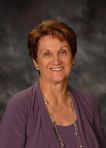Jo Ann A. Mathews's Blog, page 10
January 26, 2022
Women and Adversity: Christiane Amanpour, Journalist

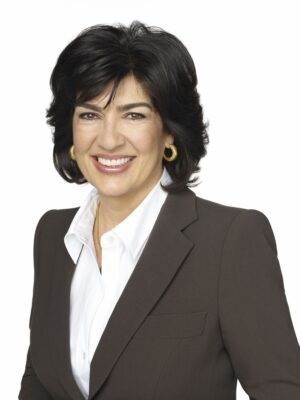
Christiane Amanpour
Journalist
(Stony Brook University)
Christiane Amanpour, Journalist
One of the most respected and recognized journalists in the world is Christiane Amanpour. She has embraced adversity by covering stories in war-torn countries around the world and by interviewing world leaders. She says, “If you want [journalists] to be the eyes and ears in our field…you need people who are willing to go to the battlefield.” She is currently the host of Amanpour & Company on PBS. At CNN, where she has worked since 1983 with a very short break, she is host of the international nightly interview program and chief international anchor. Her interest in journalism arose when her family had to leave Iran during the 1979 Islamic revolution. However, when she was in school she hoped to be a doctor.
Amanpour was born in London in 1958 of a British mother and Iranian father. Shortly after she was born, the oldest of four daughters, her father, a Muslim and Iranian airline executive, moved the family to Iran. Amanpour, whose mother was Catholic, attended Catholic schools in England.
She received her degree in journalism from University of Rhode Island and worked a short time for the NBC affiliate in Providence before going to CNN. She wasn’t immediately embraced as a television presence because of her accent and dark hair, but her reporting of the Iran-Iraq War through the 80s, and the Bosnian War into the 90s won her international recognition. She says, “I realized in Bosnia that, even if it means you’re going to be accused of not being fair, you have to tell the truth.”
Amanpour can be labeled “fearless, intrepid, daring and heroic” because she has never shied away from challenging stories:
the Iraqi invasion of Kuwaitthe Kurdish uprising in Iraqthe violence in Bosnia and HerzegovinaShe has won innumerable awards, among them Emmys, Peabodys and DuPonts, and is a great defender of freedom of the press. She appeared in the movies Iron Man 2 and Pink Panther 2 as herself.
In 1998 she married James Rubin, a journalist and former diplomat, and their son, Darius John, was born in 2000. The couple divorced in 2018.
The videos featuring Amanpour reveal her dynamic personality and strong views.
Watch:
Christiane Amanpour | On Truth and Courage – Bing video
Christiane Amanpour, Full Interview – Bing video
https://www.youtube.com/watch?v=4sxd3aeOKv4
The post Women and Adversity: Christiane Amanpour, Journalist appeared first on Jo Ann Mathews.
January 12, 2022
Women and Adversity: 2022

 Women and Adversity: 2022
Women and Adversity: 2022It’s been a tough two years since the pandemic spread around the world. Word is that 2022 will see a decline in infections and deaths from the virus. The hope is that it disintegrates now, never to infect anyone ever again. If only…
People are not stymied by the virus but live their lives as best as they can. I will continue writing my blog, which I have done for seven years featuring women who face adversity and have overcome it. There are thousands of them around the world who use their skills and are happier because of it. My aim is to encourage women to move forward despite adversity, and in the process, will achieve their goals.
Adversity is part of life, but we can’t be discouraged by it. We must continue to pursue our life’s dreams, as long as they are realistic. I can dream of having a best-selling book since I’m a writer. For me to dream of being a world-renowned singer when I’ve never sung in any group, or be a heart surgeon when I have no interest in medicine or be a CPA when numbers confuse me is totally unrealistic.
Christiane Amanpour, renowned journalist; Margaret Thatcher, former prime minister of the United Kingdom, and Susan Wojcicki, CEO of YouTube are women who have overcome adversity and have become world renowned for their accomplishments. They are examples of moving forward and using their skills. I will write about them this year, and I will continue to highlight women I feature in my 2020 ebooks: Honoring 23 Black Women, Recognizing 23 Notable Mothers, and Saluting 23 Faithful Suffragists. Some are historical figures while others are living their dreams or pursuing their dreams.
Yes, this blog is meant to encourage women to overcome what is standing in their way so they can achieve their dreams. Enjoy reading about successful women in this blog during 2022.
More information
Available at amazon.com and barnesandnoble.com:
Honoring 23 Black Women, Recognizing 23 Notable Mothers, Saluting 23 Faithful Suffragists
The post Women and Adversity: 2022 appeared first on Jo Ann Mathews.
December 22, 2021
Women and Adversity: Marie Curie

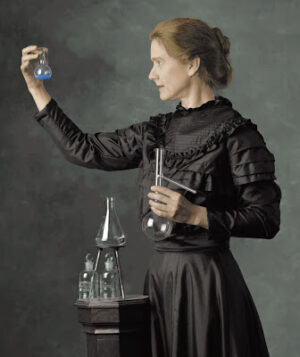
Marie Curie: Nobel Prize winner twice
Women and Adversity: Marie Curie First Woman to Receive Nobel PrizeFirst Person and Only Womanto Receive a Nobel Prize TwiceDoes that perfect gift elude you? Try a biography of one of the most admired women in the world. I posted this blog in May 2021, but Marie Curie is worth reading about again.
Born Maria Skłodowska on November 7, 1867 in Warsaw, Poland, she was the youngest of five children. Her father and mother were teachers, but her mother died when Maria was ten. Despite her high intelligence, she was denied admission to University of Warsaw because it only accepted males. Instead, she studied at the “floating university” in Warsaw that held classes in secret.
She didn’t have the funds to study abroad, so she and her older sister, Bronya, devised a plan. Maria would work while Bronya earned her degree, and Bronya would return the favor. Maria worked for five years as a tutor and governess and studied mathematics, physics, and chemistry before she was able to enroll at the Sorbonne in Paris in 1891. She earned her master’s degree in physics in 1893, and in 1894 earned a degree in mathematics.
She met Pierre Curie, a French physicist and professor in the school of physics at the Sorbonne. The couple married in 1895 and had two daughters. Irène was born in 1897, and Ève was born in 1904. Curie received her doctor of science degree in 1903, and that same year shared the Nobel Prize in Physics with Pierre.
Pierre was killed in a horse-drawn wagon accident April 19, 1906. Marie refused the French government’s offer of a state pension to support her and her daughters, saying she was capable of supporting herself and her children. She went back to work the day after Pierre’s funeral, but on May 13, the Sorbonne offered her the academic post Pierre had held. She accepted, making her the first woman to teach at the Sorbonne. Her dream was to one day establish a science laboratory as a tribute to Pierre.
This woman’s determination and use of her talents helped her reach extraordinary goals. She became known not only as Marie Curie but also as Madame Curie. She conducted extensive research and:
Investigated French physicist Henri Becquerel’s discovery of radioactivityCoined the term “radioactivity”With Pierre discovered the radioactive elements polonium and radiumConducted research on x-rays and uraniumDeveloped the theory of uranium rays, which created the field of atomic physicsStudied x-rays and x-ray machinesUsed radium to be the gamma ray source on the x-ray machineCreated smaller x-ray machines to be used in the field during World War I, which saved livesDedicated her efforts to building the Radium Institute in Paris, which was completed in August 1914, days after the start of World War IIn 1911 Madame Curie won the Nobel Prize in Chemistry, the only person to have accomplished this feat in two different sciences. That year rumors spread she was having an affair with physicist Paul Langevin, Pierre’s former student and a married man with four children. The scandal took a toll on her health.
Her daughter, Irène, won the Nobel Prize in Chemistry in 1935, sharing it with her husband, Frédéric Joliot. Her daughter, Ève, wrote the biography, Madame Curie, in 1937, and it became a movie in 1943. The 2017 movie, Marie Curie: The Courage of Knowledge, is based on her life.
Madame Curie died July 4, 1934, at the age of sixty-six in Savoy, France of aplastic anemia, a disorder associated with exposure to large amounts of radiation.
I featured her in my ebook, Women and Adversity, Recognizing 23 Notable Mothers, available at amazon.com.
More information:
www.youtube.com/watch?v=nlucuPrU0wM
www.youtube.com/watch?v=AFjGrVVXuvU
www.thenewatlantis.com/publications/the-marvelous-marie-curie
The post Women and Adversity: Marie Curie appeared first on Jo Ann Mathews.
December 8, 2021
Women and Adversity: Lucille Clifton First Black Poet Laureate of Maryland
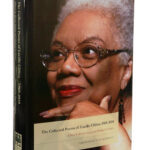
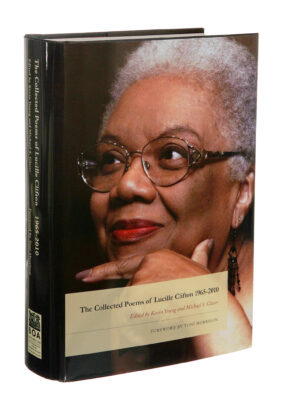 Women and Adversity: Lucille Clifton First Black Poet Laureate of Maryland
Women and Adversity: Lucille Clifton First Black Poet Laureate of MarylandI chose to repeat my blog on Lucille Clifton because those looking for a Christmas present to give may consider her books of poetry. This woman aimed to have Americans realize, through her poetry and other writings, that Blacks made noteworthy contributions in the United States. She is known for the impact her poems make with the fewest words. The New York Times rated her first book of poems, Good Times, one of the best books published in 1969. She writes of survival under arduous circumstances, oppression, politics, women’s lives and family, which is the theme of this blog, Women and Adversity. Her poems like “sorrow song,” “blessing the boats” and “jasper texas 1998” bring tears at the insight she has to inhumanity in our culture. She is quoted as often saying, “In my poems I try to comfort the afflicted and afflict the comfortable.”
Thelma Lucille Sayles was born June 27, 1936 in Depew, New York, near Buffalo. She was the first in her family to graduate from high school. She attended Howard University in Washington, D.C. and Fredonia State Teachers College in New York but didn’t stay to earn a degree.
In 1958 she married Fred Clifton, a philosophy professor. The couple had six children. Lucille worked in state and federal government jobs until 1971 when she accepted a position as poet-in-residence at Coppin State College in Baltimore, MD. During her tenure there from 1972-1974 she published two collections of her poetry, Good News About the Earth in 1972, and An Ordinary Woman in 1974. She was Poet Laureate of Maryland from 1979-85.
She was visiting writer at Columbia University School of the Arts and George Washington University and later taught literature and creative writing at University of California at Santa Cruz and at St. Mary’s College of Maryland.
Clifton won the National Book Award for Blessing the Boats: New and Selected Poems, 1988-2000 in 2000, one of her ten books of poetry. She wrote more than 20 children’s books, specifically written for African Americans, and Generations, a memoir published in 1976.
Clifton died of cancer on February 13, 2010, in Baltimore, 11 years ago.
She is featured in my ebook, Women and Adversity, Honoring 23 Black Women. It is available at amazon.com and barnesandnoble.com.
More information
www.poetryfoundation.org/articles/68874/a-list-of-lucille-clifton-favorites
www.nytimes.com/2019/10/02/books/lucille-clifton-reginald-dwayne-betts.html
10 Facts about Lucille Clifton | Less Known Facts
The post Women and Adversity: Lucille Clifton First Black Poet Laureate of Maryland appeared first on Jo Ann Mathews.
November 24, 2021
Women and Adversity: Sarah Jane S. T. Garnet Cofounder of Equal Suffrage League of Brooklyn
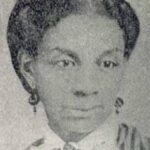 Women and Adversity:
Women and Adversity:

Sarah Jane S.T. Garnet
Sarah Jane S. T. Garnet Cofounder of Equal Suffrage League of BrooklynSarah Jane Smith Thompson Garnet argued that it was undemocratic to deny women the vote because they “had the same human intellectual and spiritual capabilities as men.”
Garnet had a distinguished career as an activist and an educator. She was a teacher’s assistant when she was fourteen years old. In 1854 she taught at the African Free School of Williamsburg, New York, now part of Brooklyn, New York. In 1863 she was appointed principal of Grammar School No. 4, the first Black principal in the New York public school system. She then became principal of Public School No. 80 and remained in that position until she retired in 1900. She advocated for Black teachers throughout her career and fought for equal pay for equal work.
Sarah Jane Smith was born July 30, 1831 in Queens County, New York, the first of 11 children. Her parents, Sylvanus and Ann Smith, claimed Native American heritage as well as African and European roots. The family made a good living from farming. Sarah’s grandmother taught her elementary school subjects until Sarah went to New York public schools, where she was tapped for the teaching assistant position. Sarah’s sister, Susan Smith McKinney Steward, was the first Black woman in New York State to earn a medical degree.
Sarah married James Thompson (sometimes referred to as James Tompkins). Their two children did not live to adulthood. Sarah continued her career in teaching, and from 1883 to 1911 she also owned a seamstress shop in her home. James died in the late 1860s, and Sarah married the abolitionist Henry Garnet in 1879. Henry became ambassador to Liberia, but the couple had separated, so he went there alone. He died in Monrovia in 1882. Sarah then became even more active in the suffrage movement.
She and her sister Susan founded the Colored Women’s Equal Suffrage League of Brooklyn in the late 1880s, which became affiliated with the National Association of Colored Women (NACW). Garnet advocated for civil rights and equal rights for all people, and the Equal Suffrage League invited White suffragists to its meetings. On the other hand, White suffragists ignored and excluded Black suffragists from their ranks. As a member of the NACW, Garnet was head of the suffrage division. She educated members about women suffrage, distributed literature, and gave speeches.
In 1911, Sarah and Susan went to the University of London to attend the first meeting of the Universal Races Congress. Steward presented a paper titled “Colored American Women.” When the sisters returned, the Suffrage League held a welcome reception on September 7 at Garnet’s home, and the two discussed what they had learned in London.
Ten days later on September 17, 1911, Sarah died at her home. She was 80 years old.
More information:
Biographical Sketch of Sarah Jane Smith Thompson Garnet | Alexander Street, a ProQuest Company
Sarah J. Garnet (U.S. National Park Service) (nps.gov)
Sarah J. Smith Tompkins Garnet (1831-1911) • (blackpast.org)
The post Women and Adversity: Sarah Jane S. T. Garnet Cofounder of Equal Suffrage League of Brooklyn appeared first on Jo Ann Mathews.
November 10, 2021
Women and Adversity: Admiral Michelle J. Howard
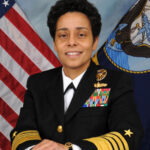
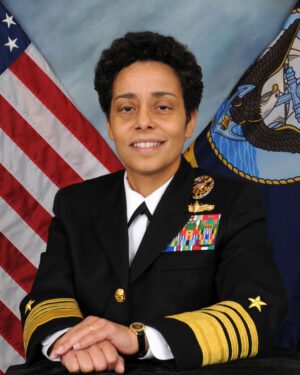
Admiral Michelle J. Howard (Retired)
Women and Adversity: Admiral Michelle J. Howard (Retired) First woman four-star admiral in the NavySince it is Veterans Day, I think it’s appropriate to honor a woman who is a veteran. I never knew that a woman, Michelle Janine Howard, had reached the rank of four-star admiral in the Navy. She attended the Naval Academy, graduating in 1982, and retired from the Navy in 2017. Her list of achievements during her naval career are stellar. Among them are:
1990: was named chief engineer aboard the USS Mount Hood.1998: earned a master’s degree in military arts and sciences.1999: became the first African American woman to command a Navy ship, the USS Rushmore.2009: took command of Expeditionary Strike Group Two, which guarded the Persian Gulf, being the first African American woman to lead a U.S. Navy battle group.2014: became first woman promoted to rank of four-star admiral. The same day became the second highest-ranking officer in the Navy with the title of 38th vice-chief of naval operations.2016: became commander of naval forces in Europe and Africa.2017: retired from the Navy.2018-2020: taught cybersecurity and international policy at the Elliott School of International Affairs at George Washington University.Admiral Howard was born April 30, 1960, in Riverside, CA but the family relocated to Colorado. Her father was a master sergeant in the Air Force, and by the time she was 12, Howard began considering a military career. She didn’t realize at the time that women were not accepted in military academies, but that changed when President Ford signed the Military Procurement Bill, allowing women to enter the academies in 1976.
In 1989 she married Wayne Cowles, a Marine, not retired. In 2019 she became a member of the IBM board of directors, and in 2020 was on one of President-elect Joseph Biden’s transition teams.
More information:
https://fortune.com/2015/05/25/5-tough-leadership-lessons-from-the-navys-top-female-commander
https://www.youtube.com/watch?v=a-Rh9vvFOQs
Q&A with Michelle Howard | C-SPAN.orga
The post Women and Adversity: Admiral Michelle J. Howard appeared first on Jo Ann Mathews.
October 27, 2021
Women and Adversity: Belva Ann Lockwood, First Woman to Argue Before the Supreme Court
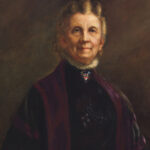 Women and Adversity: Belva Ann Lockwood
Women and Adversity: Belva Ann Lockwood
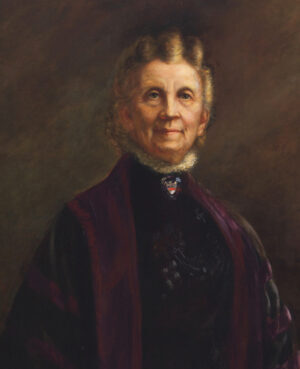
Belva Ann Lockwood (National Portrait Gallery, Smithsonian)
First Woman to Argue Before the Supreme CourtBelva Ann Lockwood’s flamboyant manner and special ability of self-promotion helped people of her era become more aware that women had talents equal to those of men. When she was denied the right to argue before the Supreme Court because she was a woman, she lobbied Congress for five years before they passed “A Bill to Relieve Certain Legal Disabilities of Women.” President Rutherford B. Hayes signed it on February 15, 1879. Lockwood was the first woman to practice law before the Supreme Court.
She is also known as the first woman to run a dedicated, legitimate national campaign for president of the United States. Although Victoria Woodhull announced her candidacy for the presidency in 1872, she did not meet the Constitutional age requirement of being at least 35 years old, didn’t have a well-organized campaign and did not have her name on any ballot.
Lockwood chose to run for president in 1884 on the National Equal Rights Party ticket after the two major political parties did not endorse suffrage for women. In her first speech of the campaign, she said the Constitution did not prevent her from running, and further, “I cannot vote, but I can be voted for.” Marietta Stow, an activist from California, was her running mate.
Lockwood understood she wouldn’t be elected, but she emphasized issues of concern to her:
universal suffrageequal pay for womencitizenship for Native AmericansIronically, suffragists supported the Republican Party, believing a Republican majority would pass suffrage for women. In the end Lockwood received about 5,000 votes. She maintained that the total was inaccurate, saying that votes for her were destroyed or not counted. In the end, Grover Cleveland became the first Democrat in the White House after the Civil War. Lockwood ran for president again in 1888 on the National Equal Rights Party ticket, but with less fanfare. Benjamin Harrison, a Republican, defeated Cleveland, not by the popular vote but in the Electoral College.
Belva Ann Bennett was born October 24, 1830 in Royalton, N.Y., near Niagara Falls. When she was 14, she graduated from public school and began teaching. She used the money she earned to attend one year at Royalton Academy, a private school for those preparing for college. Her father objected to her going to college, so when she was 18, she married Uriah McNall, who worked at a saw mill. The couple had a daughter, Lura, in 1849. McNall became ill and died in 1853.
A widow at 22 years of age, Belva accepted a teaching job but learned that men earned twice as much as she did for the same job. Instead of teaching, she sold some of her late husband’s property and used the money to attend Genesee Wesleyan Seminary in Lima, N.Y. and left Lura with her parents.
She graduated in 1857 and held administrative positions but was disappointed in the limited views people had of women’s abilities. She moved to Washington, D.C. with her daughter and sister in 1865
and established a school for young women. She was 37 years old when she married Ezekiel Lockwood, a dentist. Their only child died at 18 months old.
Belva continued to speak out for equal rights, lobbied Congressional leaders, and helped draft a bill requiring equal salaries for all civil service employees. She decided law school was the answer to making changes, but law schools refused to admit her because she was a woman. When National University Law School in D.C. started admitting women in 1870, she applied. Of the fifteen women admitted to the school, she was one of the two who completed the course of study in 1873. However, the school declined to issue the female graduates their diplomas.
Lockwood wrote to President Ulysses S. Grant, chancellor ex officio of the school, stating, “I desire to say to you that I have passed through the curriculum of study in this school, and am entitled to, and demand, my diploma.” It arrived about two weeks later.
Belva had a successful law practice and worked tirelessly for women’s rights and social causes. She was a member of the Universal Peace Union and traveled to Europe to speak for peace and arbitration. In 1914 she said, “If [a woman] demonstrates that she is fitted to be president she will someday occupy the White House. It will be entirely on her own merits, however. No movement can place her there simply because she is a woman. It will come if she proves herself mentally fit for the position.”
Belva Ann Lockwood died May 19, 1917, three years before the Nineteenth Amendment was ratified, granting women the vote. She was 86 years old. She had outlived Ezekiel, who died in 1877, and her daughter, Lura, who died in 1894. I feature Belva Ann Lockwood in my ebook, Women and Adversity, Saluting 23 Faithful Suffragists, available at amazon.com and barnesandnoble.com.
More information:
www.mentalfloss.com/article/501359/9-facts-about-pioneering-lawyer-and-activist-belva-lockwood
www.historynet.com/belva-lockwood.htm
www.washingtonian.com/2016/10/21/meet-belva-lockwood-the-first-woman-to-run-a-full-presidential-campaign
https://nwculaw.edu/belva-ann-lockwood-biography
The post Women and Adversity: Belva Ann Lockwood, First Woman to Argue Before the Supreme Court appeared first on Jo Ann Mathews.
October 13, 2021
Women and Adversity: Rebecca Lee Crumpler, M.D. First Black Female Medical Doctor in U.S.
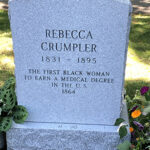
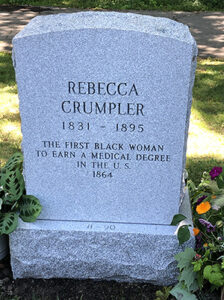 Women and Adversity:Rebecca Lee Crumpler, M.D.First Black Female Medical Doctorin U.S.
Women and Adversity:Rebecca Lee Crumpler, M.D.First Black Female Medical Doctorin U.S.I happened to come across an article in 2020 about a fundraiser to buy a headstone for Dr. Rebecca Lee Crumpler. I had never heard or read about this woman, and I wondered how the first Black woman medical doctor in the United States could be overlooked for more than a century. She is often mistaken for Rebecca Cole, the second Black woman medical doctor. Even pictures of Cole are identified as Crumpler, but no picture of Crumpler exists.
Crumpler was born Rebecca Davis on February 8, 1831 in Christiana, Delaware to Absolum and Matilda (Webber) Davis; however, she was raised by an aunt in Pennsylvania, who attended to sick people. Recognized for being an intelligent girl, Crumpler was accepted in the West-Newton English and Classical School in Massachusetts as a “special student.” In 1852 she moved to Charlestown, Massachusetts and worked as a nurse. In 1860 she applied to the New England Female Medical College in Boston, was accepted and graduated in 1864.
She had married Wyatt Lee in 1852, but the man died of tuberculosis in 1863. On May 24, 1864 she married former fugitive slave from Virginia Arthur Crumpler. She began practicing medicine in Boston but when the Civil War ended, the couple moved to Richmond, Virginia where Crumpler worked through the Freedmen’s Bureau to care for freed slaves. Arthur was a blacksmith.
Of course, Rebecca encountered prejudice on many levels from being denied access to hospitals to having pharmacists refuse to fill her prescriptions The couple returned to the Beacon Hill neighborhood of Boston in 1869, probably because the prejudice in the South was nearly unbearable. Arthur then became a porter while Rebecca practiced medicine.
In December 1870 they had a daughter, Lizzie Sinclair Crumpler. No records are available, but the girl most likely died before she turned ten since she is not mentioned in the 1880 census with her parents. That year the couple moved to the Hyde Park area of Boston.
Rebecca didn’t practice medicine very much from then on, but in 1883 she published A Book of Medical Discourses in Two Parts about medical care for women and children. She died March 9, 1895 at age 64 of fibroid tumors. Arthur, who had taught himself to read and write died May 8, 1910. No accurate birthdate was available, but he was born sometime during the 1830s. The couple were buried in Fairview Cemetery but did not have gravestone markers.
In 2020 the Friends of Hyde Park Library and Hyde Park Historical Society started a fundraiser to buy appropriate headstones for the couple. On July 16, 2020 a ceremony was held to dedicate the headstones of the couple.
Want to read more about her?
Dr. Rebecca Lee Crumpler (U.S. National Park Service) (nps.gov)
https://cfmedicine.nlm.nih.gov/physicians/biography_73.htm
OverlookedNo More: Rebecca Lee Crumpler, Who Battled Prejudice in Medicine – Newssapp.com
kazantoday.com/WeeklyArticles/dr-rebe...
Women Who Impacted Medicine: Rebecca Lee Crumpler (obgynwc.com)
The post Women and Adversity: Rebecca Lee Crumpler, M.D. First Black Female Medical Doctor in U.S. appeared first on Jo Ann Mathews.
September 22, 2021
Women and Adversity: Ella Fitzgerald
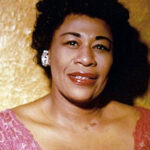
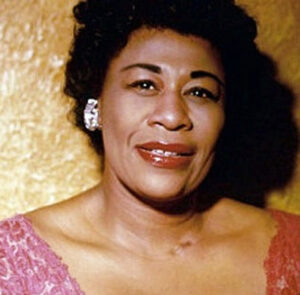
Ella Fitzgerald, “First Lady of Song”
Women and Adversity: Ella FitzgeraldFirst Black Woman to win a Grammy AwardElla Fitzgerald dreamed of being a dancer and in 1934 entered an amateur contest at the Apollo Theater in Harlem, but the main show featured dancers, and Fitzgerald felt she couldn’t compete against them. Instead she switched to singing Hoagy Carmichael’s “Judy” and “The Object of My Affection” and won first prize, $25.
In 1935 she joined Chick Webb’s band as a singer and recorded “Love and Kisses” with him.She began to be a regular entertainer at the Savoy Ballroom in Harlem.In 1938 she earned her first No. 1 hit, “A-Tisket, A-Tasket,” which she co-wrote.She followed that hit the same year with “I Found My Yellow Basket.”When Webb died in 1939, she became the bandleader and renamed it Ella Fitzgerald and Her Famous Orchestra.She became popular in the 40s, recording songs, starring in movies and performing with well-known entertainers. She developed the art of scat, the improvisational singing of nonsense syllables instead of words, and is regarded as one of the best scat singers ever.
Other accomplishments:
In 1958 at the first-ever Grammy Awards, she became the first black woman to win a Grammy: one for best individual jazz performance and another for best female vocal performance.Won 13 Grammy Awards in her lifetime.Earned the title of “First Lady of Song” through the 1950s and ‘60sCollaborated with Louis Armstrong, Count Basie and Frank SinatraRecorded more than 200 albums, about 2,000 songs and sold more than 40 million records.Fitzgerald was born April 25, 1917 in Newport News, Virginia, the daughter of common-law partners. Her parents separated shortly after her birth, and her mother took her to Yonkers, New York where they lived with her mother’s boyfriend. In 1923 her mother had another daughter, and to help financially, little Ella worked as a messenger “running numbers” and being a lookout for a brothel.
Her mother died in 1932, and Fitzgerald moved in with an aunt. She was sent to reform school because of her absences, but within two years she was living on the streets, but her mind set didn’t change drastically after her Apollo win. She married Ben Kornegay, a convicted drug dealer, in 1941 but had the marriage annulled. In 1947 she married Ray Brown, and the couple adopted the son of Fitzgerald’s half-sister, but the couple divorced in 1952.
In the 80s Fitzgerald developed health issues, including diabetes, which affected her eyesight. In the mid-90s both her legs were amputated below the knees. She died June 15, 1996, in Beverly Hills at the age of 79.
I featured Fitzgerald in my ebook, Women and Adversity: Honoring 23 Black Women, available at amazon.com and barnesandnoble.com.
More about Fitzgerald:
www.youtube.com/watch?v=-BbAbb_BZ_U
www.npr.org/2017/04/25/524726767/early-hardship-couldnt-muffle-ella-fitzgeralds-joy
The post Women and Adversity: Ella Fitzgerald appeared first on Jo Ann Mathews.
September 8, 2021
Women and Adversity: Marie Foster , Voting Rights Activist
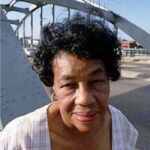
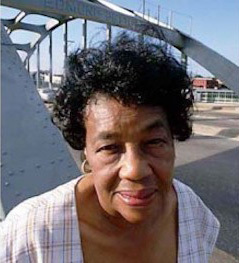
Marie Foster, Voting Rights Activist (aaregistry.org)
Women and Adversity: Marie FosterVoting Rights ActivistIt seems like not much has changed in the past 100 years for Blacks who wish to vote in Alabama. In the early 1960s, Marie Foster, who lived in Selma, tried eight times to get a voter’s card before officials finally issued one to her. Each time she tried to register, a new excuse arose to deny her the privilege.
In order to vote, Alabama residents had to pass a literacy test, but Black applicants had more difficult questions. A Black person might be asked to read and interpret a section of the Alabama Constitution. Another question might be to write down what the test administrator was reading or recite back what was being read. Still another could be to name one area of authority over state militia reserved exclusively to the states.
Foster understood this discriminatory system and decided to take steps to help Black voters. In 1963 she offered other Black people literacy and citizenship classes. Her first class drew one student, a 70-year-old man. She succeeded in teaching him how to write his name. Her efforts, though, began to attract a lot of people, and her classes were filled.
Those classes drew attention from people in power. She was the target in 1964 when Dallas County Circuit Court Judge James Hare prohibited groups of three or more people from meeting to discuss civil rights or voter registration in Selma.
Demonstrations against racial discrimination gained ground, and on March 7, 1965, known as Bloody Sunday, Foster was one of the hundreds of people ready to march the fifty miles from Selma’s Edmund Pettus Bridge to Montgomery. State troopers met the marchers, and one of them clubbed Foster in the knees. She fell but later said of the incident, “I lay on the pavement with my eyes closed. I didn’t move. I stood my ground.”
When the people reorganized on March 9, the police stopped them again. The march finally took place from March 21 to March 25. Foster was one of only two women to complete the march.
President Lyndon Johnson signed the Voting Rights Act on August 6, 1965, which changed practices Foster had encountered, although other methods of voter suppression continue to exist today.
Marie Priscilla Martin was born October 24, 1917, in rural Wilcox County, Alabama. Her mother wanted Marie and her two brothers to go to school, but Marie’s father refused to move away from their remote location, so her mother took the children and went to Selma without him.
Marie married without graduating from high school. She raised three children and was a widow when she decided to complete her high school education. She then went to junior college, became a dental hygienist, and worked for her brother, Dr. Sullivan Jackson.
She:
helped establish the Dallas County Voters League.was called “The Mother of the Voting Rights Movement” by local organizers.cofounded the National Voting Rights Museum and Institute in Selma.had a park remove a statue commemorating a Ku Klux Klan member.was appointed to the Dallas County Board of Registrars.attended the Million Man March on October 15, 1995.In her later years, Foster taught children to read and drove children to Sunday school.
She died September 6, 2003 in Selma at the age of 85.
I feature Foster in my ebook, Women and Adversity, Recognizing 23 Faithful Suffragists.
Learn more about Foster:
www.youtube.com/watch?v=l6qyvQnAoZk
biography.jrank.org/pages/2409/Foster-Marie.html
www.crmvet.org/info/litques.pdf
The post Women and Adversity: Marie Foster , Voting Rights Activist appeared first on Jo Ann Mathews.

